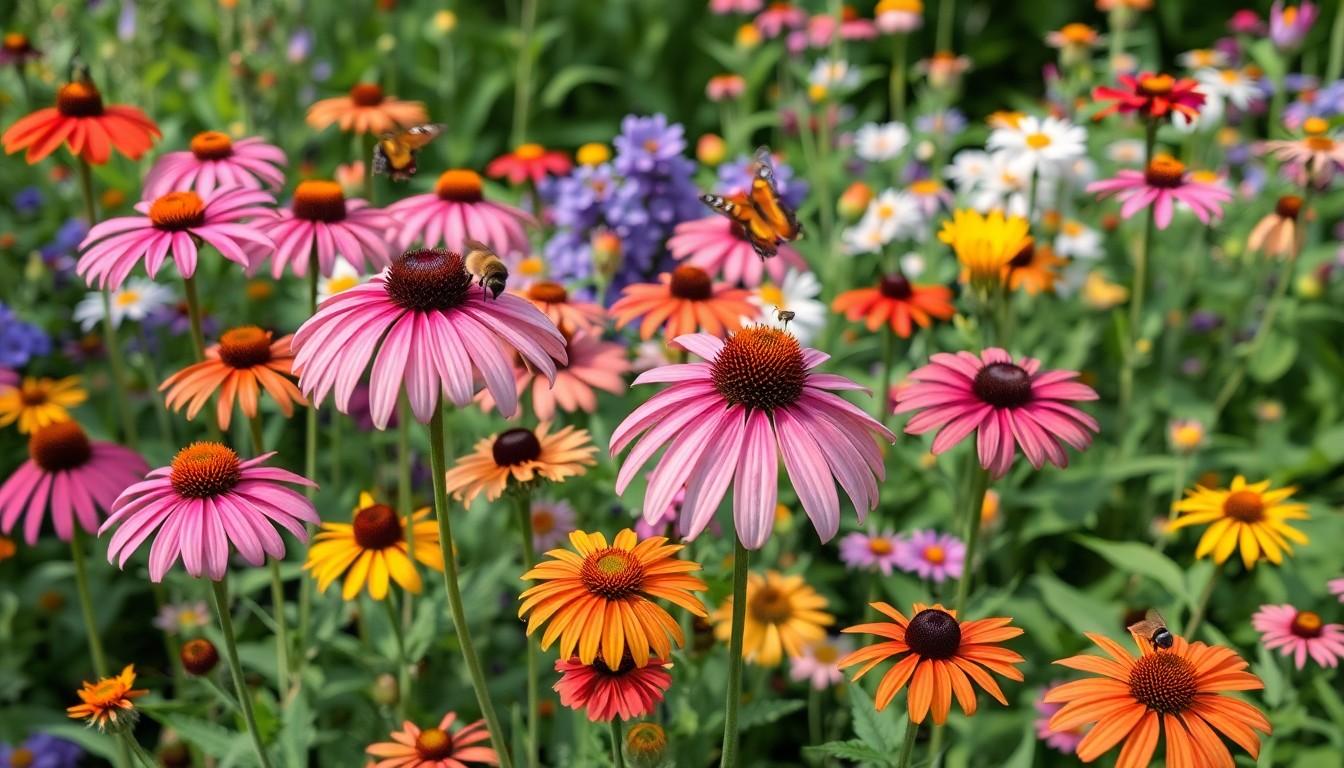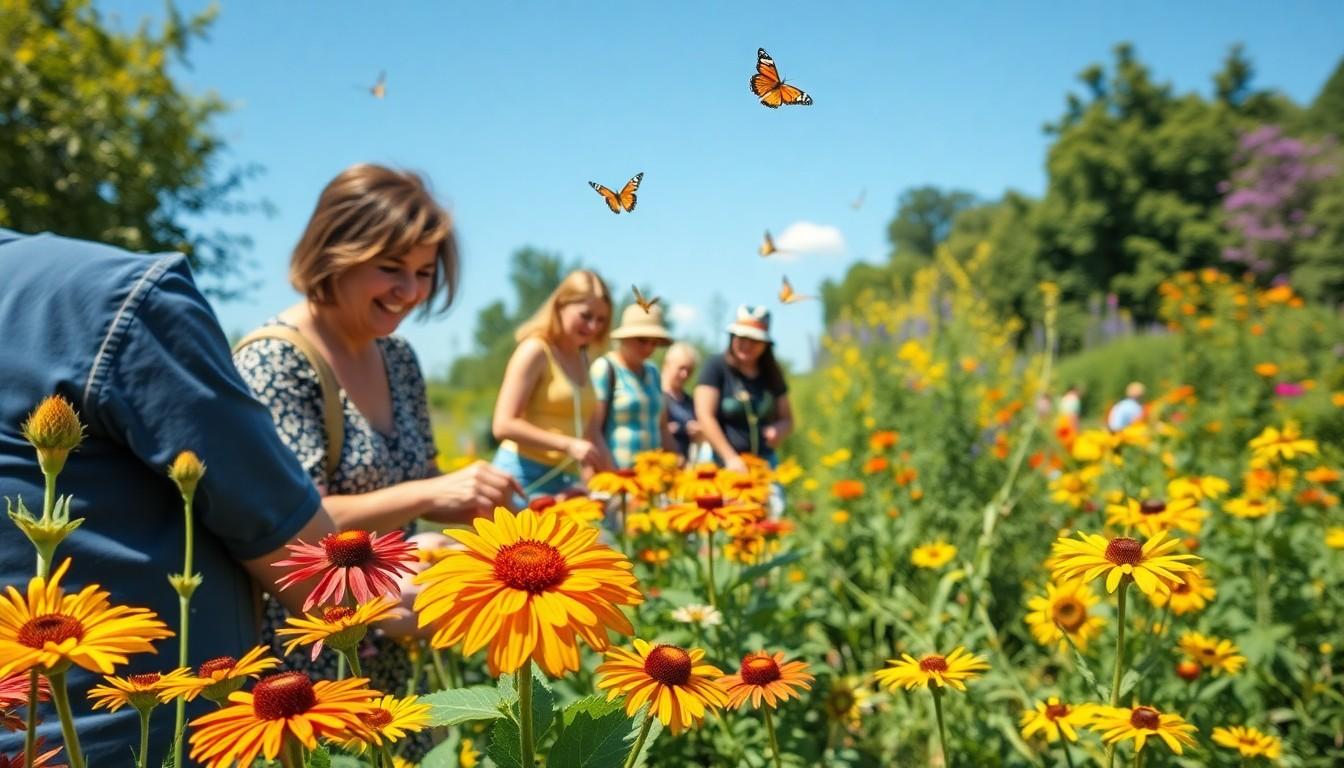In the heart of the Midwest, Missouri boasts a stunning array of native plants that are not just pretty faces. These resilient green beauties are like the unsung heroes of the ecosystem, providing food and shelter for local wildlife while adding a splash of color to the landscape. Imagine a garden that doesn’t just look good but also helps save the planet—sounds like a win-win, right?
Missouri Native Plants
Missouri native plants serve as vital elements within local ecosystems. These species support biodiversity, offering food and habitat for wildlife. Many plants uniquely adapted to Missouri’s climate, soil, and moisture levels thrive across various regions, from prairies to forests.
Common native plants include the showy goldenrod, which blooms brightly in late summer, and the Missouri primrose, known for its stunning yellow flowers. These selections attract pollinators like bees and butterflies, enhancing garden health. Additionally, native grasses such as little bluestem and big bluestem provide excellent ground cover, preventing soil erosion while supporting critters.
Planting native species in gardens brings numerous benefits. For instance, they require less water and fertilizer than non-native varieties, resulting in lower maintenance costs. Resilient plants, like echinacea and black-eyed Susan, withstand local pests more effectively, reducing the need for chemical treatments.
Using native plants promotes environmental sustainability. Restoring habitats for local wildlife enhances ecosystem stability. Many gardeners appreciate the aesthetic appeal of these plants, as they create beautiful, natural landscapes.
Exploring local nurseries often reveals an array of native plant options. Many organizations offer resources to help gardeners select appropriate species. Engaging with local conservation groups can also provide valuable insights into the best practices for planting and maintaining native gardens.
Benefits of Using Native Plants

Using native plants offers numerous advantages to both the environment and the homeowner. These plants thrive in their local ecosystems, providing essential benefits while enhancing garden aesthetics.
Environmental Impact
Native plants positively influence the environment. They support local wildlife by providing food and shelter for birds, insects, and other animals. Additionally, these plants contribute to soil health by preventing erosion and improving soil structure. Planting native species reduces the need for chemical pesticides and fertilizers. A diverse plant community can foster resilience against pests, leading to healthier ecosystems. Furthermore, since native plants require less water, they promote water conservation, which is crucial in maintaining local water resources.
Aesthetic Value
Native plants bring unique beauty to landscapes. Their natural forms and colors complement local environments, offering visual interest throughout the seasons. Gardeners can create vibrant displays by incorporating flowering natives like butterfly weed and coneflowers. Native plants also adapt well to local conditions, ensuring healthy growth with minimal intervention. These plants attract pollinators, enhancing the ecological balance while creating dynamic, lively gardens. Incorporating native species into landscaping designs fosters a sense of place, celebrating the unique character of Missouri’s natural heritage.
Popular Missouri Native Plants
Missouri showcases a diverse range of native plants. These species thrive in various landscapes, contributing significantly to local ecosystems.
Trees
Missouri boasts several native tree species that adapt well to different environments. The Eastern Redbud stands out with its striking pink flowers in early spring. Bur Oak is another essential tree, providing acorns for wildlife and shade for gardens. White Oak is renowned for its beautiful autumn foliage, attracting birds and insects alike. These trees support biodiversity, fostering healthy habitats throughout the state.
Shrubs
Native shrubs flourish in Missouri’s landscapes, adding both beauty and functionality. The Spicebush features fragrant flowers that attract pollinators in spring. Serviceberry produces edible berries that birds enjoy, enhancing garden biodiversity. Another remarkable shrub, Missouri Gooseberry, brings unique foliage and thorns, offering shelter for various wildlife. These shrubs require minimal maintenance while enhancing the ecological health of gardens.
Wildflowers
Wildflowers in Missouri create vibrant displays and support local ecosystems. Butterfly Weed stands as a favorite among pollinators, serving as a food source for adult butterflies. Missouri Primrose adds striking yellow blooms, attracting bees and other insects. Black-eyed Susan showcases bright colors, providing aesthetic appeal and sustenance for wildlife. Incorporating these wildflowers fosters a dynamic and flourishing garden that celebrates local natural beauty.
How to Incorporate Native Plants in Landscaping
Incorporating native plants into landscaping enriches both the environment and personal gardens. Strategic planning ensures an aesthetically pleasing and functional design.
Planning Your Garden
Start by assessing the garden’s sunlight, soil type, and moisture level. Understanding these factors helps in selecting suitable native plants for specific areas. Incorporate a mix of trees, shrubs, and wildflowers to enhance biodiversity. He may consider layering plants in heights to create visual interest. Including flowering natives like Butterfly Weed ensures vibrant colors that attract pollinators. Additionally, spacing plants appropriately allows for future growth and air circulation, enhancing overall plant health.
Maintenance Tips
Focus on regular, yet minimal maintenance for native plants. Water deeply but less frequently to encourage deep root systems. Mulching around plants reduces weeds and retains moisture. Observe for pests, as native plants typically resist infestations. Pruning can enhance air circulation and encourage new growth, but it’s important to do so at the right time. Emphasizing a hands-off approach allows plants to adapt and thrive naturally in the local ecosystem.
Resources for Finding Native Plants
Finding Missouri native plants involves various resources tailored for gardeners and conservationists. Local nurseries often carry a diverse selection of native species, making them a great first stop. Many organizations, such as the Missouri Native Plant Society, provide valuable information on locally adapted plants and gardening techniques.
State and regional botanical gardens frequently host workshops and plant sales focused on native flora. These events serve as excellent opportunities to learn about native plants while connecting with local gardening communities. Online databases like the USDA Plant Database allow easy access to information on Missouri native plant species, complete with growing conditions and habitat preferences.
Additionally, reference books on native plants can offer in-depth knowledge. Titles such as “The Flora of Missouri” provide extensive details about local species, including habitat associations and ecological roles. Engaging with local conservation groups helps individuals stay informed about native gardening best practices and habitat restoration initiatives.
Planting guides available through government agencies assist in selecting the right plants for specific environments. Resources like MoDNR (Missouri Department of Natural Resources) offer tips on integrating natives into landscaping while promoting biodiversity.
Social media platforms also provide a space for enthusiasts to share experiences and tips on cultivating native plants. Online forums and groups dedicated to Missouri native gardening present a valuable network for exchanging ideas and resources.
With access to these tools and communities, individuals can effectively gather the knowledge needed to create thriving native gardens that reinforce local ecosystems in Missouri.
Vibrant and Sustainable Gardens
Embracing Missouri native plants is a rewarding choice for any gardener. They not only beautify landscapes but also play a crucial role in supporting local ecosystems. By opting for these resilient species, individuals contribute to biodiversity and promote environmental sustainability.
The benefits extend beyond aesthetics, as native plants require less water and maintenance while attracting beneficial wildlife. This approach fosters a thriving garden that aligns with the natural rhythms of the region.
As gardeners explore local resources and engage with conservation efforts, they’ll find that cultivating native plants enriches both their outdoor spaces and the environment. Missouri’s unique flora offers endless possibilities for creating vibrant and sustainable gardens.

